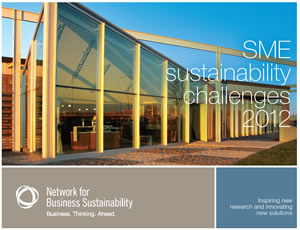 What separates leaders from followers in the area of energy and carbon management? Bigger cost reductions and better operating performance. How do they achieve these results? By outperforming followers with executive sponsored programs and investing in technology to manage and analyse data.
What separates leaders from followers in the area of energy and carbon management? Bigger cost reductions and better operating performance. How do they achieve these results? By outperforming followers with executive sponsored programs and investing in technology to manage and analyse data.
That’s the message to take away from a recent energy and carbon management report by research firm Aberdeen Group. What can be inferred from this report is that delivering improved business performance will, in the long term, only be achieved by a systematic and consistent approach to energy and carbon, which will accommodate the increasing complexity and quantity of the underlying data.
The challenges of (environmental) data management Data management is a common problem across many areas of business in different industries, and carbon management is no exception. However, managing carbon suffers from a lack of maturity, driven by insufficient business attention. The good news is that data practises from more mature industries can be applied. Receiving data from your supply chain in a timely and easy to manage format is the first major obstacle for most organisations. Leaders are 50% more likely to have supplier data transferred directly into a software application*. Some organisations choose a single supplier to simplify this although this is not always the best commercial decision.
The concept of a Network of Exchange is used by industries such as aviation and automotive and allows the collection of disparate data and subsequent standardisation for communication to reporting platforms. Such a Network now exists for the flow of environmental data from utility supplier to organisations. Consistency and completeness of data are the next challenges for effective carbon management. Environmental data is usually fragmented and decentralised as it resides with multiple stakeholders across the business. There is also a wide variety of environmental data collected such as energy cost, Scope 1, 2, and 3 emissions and consumption at an activity and asset level. To overcome this, it’s important to accept that data comes from many sources, and equally important to avoid the temptation to ‘turn off’ any data source. The concept of data pedigree priority allows the ‘ranking’ of data based on quality and value to your business. Business decisions can be made on the best available data at the time (which is better than no data), and your carbon management system can automatically substitute higher value data as it becomes available.
Why you need more than a spreadsheet for environmental data management Spreadsheets are fine for calculation. However, for sustained carbon management you need more than calculation of your co?-e. When the big data flows arrive a spreadsheet will drown you in a mass of numbers. Granularity in your data will lead to improved decision making but only if you have a system that can manage the data and present information in a manner that your stakeholders can relate to.
Environmental data programs need to be managed in the same way a Sales or HR program would be managed, with a scalable software solution that allows you to forecast and set and track against targets. Making the most of environmental data management processes With a platform of robust and complete data behind you, you are now in a position to deliver ongoing value to your business. Leading organisations deliver this by ensuring metrics are linked to operational and financial elements that are already embedded into the organisation*. A system that allows the linking of carbon data to other business benchmarks such as output, revenue or inventory can provide indicators and benchmarks that are easily understood. Overlaying this information with technology elements such as analytics, dashboard and mobility provides the visibility across the business to effect change.
What does your business stand to gain from good environmental data and effective carbon management? Accessibility to reliable environmental data allows businesses to make fast decisions that reduce costs. For example, manufacturing plants are using energy data to contextualise real-time events to minimise production, improve energy efficiency and minimise emissions*.
Consistency of data allows organisations to benchmark and identify best practices that can be shared. Equally poor performing areas of the business can take responsibility and make improvements. There is much that can be applied from the fundamentals of good data management to improve environmental data. The sooner you start the sooner you can benefit from cost reductions and process efficiencies.
*Energy and Carbon Management: A Roadmap for Sustainable Production July 2012 | Aberdeen Group
Simon McCabe is the resident Green Crusader and the Business Relations Director for Intelligent Pathways.
Like this:
Like Loading...

 20 February 2013 — In the face of Western Australia’s 9 March state election, the Green Building Council of Australia has outlined a three-point green plan for the state’s buildings and communities to create “a clear long-term pathway to resilience and sustainability”.
20 February 2013 — In the face of Western Australia’s 9 March state election, the Green Building Council of Australia has outlined a three-point green plan for the state’s buildings and communities to create “a clear long-term pathway to resilience and sustainability”.
